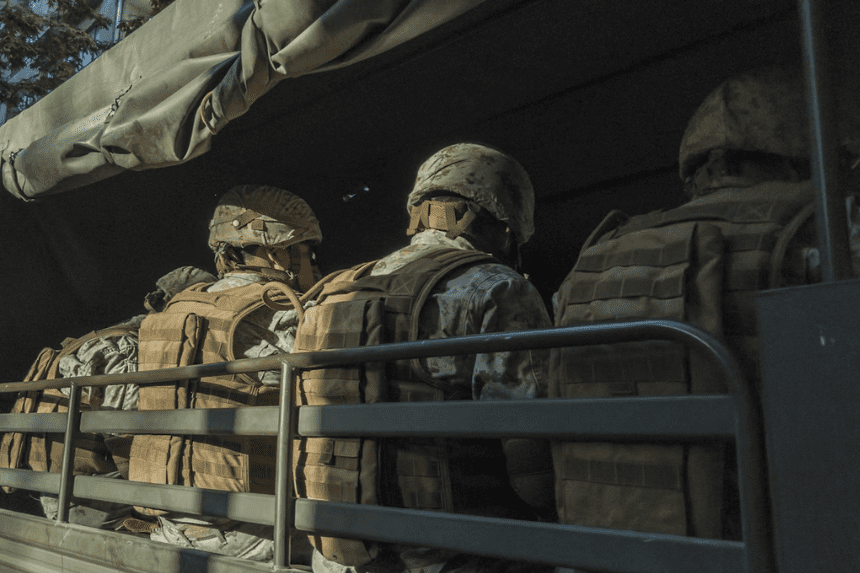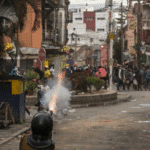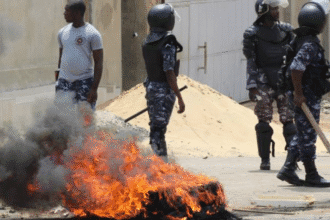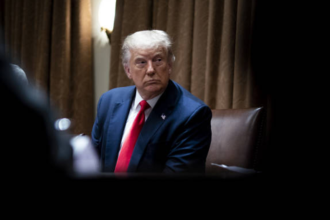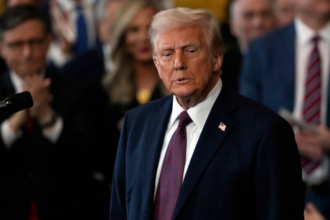In a rare address to top-ranking military personnel at Marine Corps Base Quantico, former President Donald Trump used major American cities as a military training ground. Speaking to the audience of generals, admirals, and other senior officials around the world, he depicted civil disturbance as a strong military response to a domestic threat.
Trump’s comment is amidst increasing concerns over urban crime, immigration challenges, and cultural changes in the army. He said that deploying forces in cities such as Los Angeles, Chicago, and New York may be important to restore and strengthen national security.
The event was very focused on military reforms, cultural standards, and operational readiness. Trump emphasized that internal threats were serious, as anti-foreign, and he suggested that the American armed forces should adapt accordingly.
Why Use Cities for Military Training?
Trump stated that American cities experiencing crime and unrest should serve as practical military training grounds. He argued that real-world urban environments offer ideal scenarios for soldiers to build readiness, discipline, and strategic skills.
According to Trump, the objective is two-fold: restore safety in Democratic-led cities and prepare troops for modern-day conflict. “These cities are no longer safe,” he said, adding that his administration would continue using military forces for domestic law enforcement purposes.
He framed this initiative as part of a larger effort to “fix decades of decay” and reassert military strength on all fronts—internal and external. Here is the link to our article on Military Aid Strategy.
What Changes Were Announced by Military Leadership?
Defense Secretary Pete Hegseth unveiled a series of sweeping changes. These include enforcing male-level physical fitness standards for all service members and eliminating what he called “woke distractions” in the military.
He declared the end of beard exemptions, anonymous complaint systems, and other policies deemed inconsistent with a “warrior ethos.” Hegseth emphasized uniformity, high standards, and the need to focus solely on combat readiness.
He admitted these changes could reduce diversity in the ranks but maintained that excellence must come before inclusion. Trump later echoed Hegseth’s points, praising the return to traditional values.
What Was the Purpose of the High-Level Gathering?
The meeting brought together military leaders from across the globe, including those stationed in Europe, the Middle East, and Asia. Held under tight security, the summit aimed to restore morale, inspire discipline, and generate “esprit de corps,” according to Trump.
While such gatherings are rare, Trump said it was essential to meet in person to align leadership on urgent reforms. Uniformed officers listened intently as both Trump and Hegseth laid out their vision for reshaping the future of the U.S. military.
The former president emphasized a return to “fitness, ability, and character” as the core values of service, dismissing concerns about political correctness or social equity programs. Here is the link to our article on Military Training Operations.
What Are the Reactions and Concerns?
Several state officials criticized Trump’s rhetoric and approach, warning that using U.S. cities as military training grounds risks politicizing the armed forces. Critics also expressed concern over the exclusionary tone of the proposed standards, particularly their impact on women and minority recruits.
Military veterans and lawmakers alike questioned the long-term implications for recruitment and morale. They fear that the shift in military culture may deter qualified individuals from serving, especially in communities already underrepresented.
Meanwhile, international observers called the summit unprecedented, with some questioning why such a large meeting was not held virtually, considering logistical and strategic concerns.
Final Thoughts
Military training grounds in American cities are at the center of a proposal that indicates a significant change in the country’s approach to internal security and military readiness. The speech of Trump, along with Hegseth’s reforms, reflects a wide push to reopen the culture, structure, and role of the American armed forces. As the debate continues around civilian freedom, defense policies, and national identity, the army’s role will remain a central issue in domestic affairs. While some see this step as an essential course improvement, others see it as a subject.


